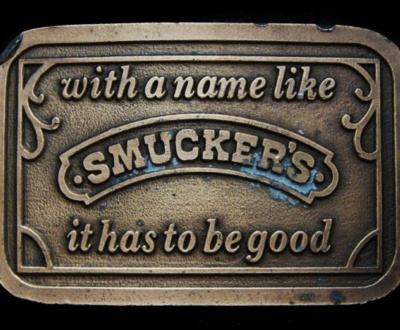Almost nothing is more important to the success of your online business than your website’s sales page. If your page is able to successful turn visitors into customers, you can survive subpar performance in many other areas of the company, while the opposite situation is almost guaranteed to bring failure. For example, a great promotional and PR campaign that brings high-volume traffic to your website would be essentially useless if none of those visitors became customers because your sales page did not close them. However even a small-scale marketing campaign could yield tremendous profits if your sales page is able to get a high percentage of visitors to click the “checkout” button.
Here are seven features of successful sales pages that can help you convert more traffic into paying customers:
- A Clear Call to Action. Including a clear call to action on your page is critical. Unless you tell your visitors what they are supposed to do when they get to your page, you are forcing them to guess what they should be doing, which is a surefire way for them to misinterpret the object of the page. Instead make sure you articulate exactly what you want the prospect to do once they’ve gotten to your page in clear, concise language. If they are supposed to sign up for a free trial, say that. If they are supposed to buy now, say that instead. If you want them to join your mailing list, then make that your call to action.
- One Primary Action. Having a clear call to action for the page is important, but equally important is focusing that call to action exclusively. Successful sales pages have one and only one primary action that dominates the page. That means if you are trying to get someone to purchase your product, the one and only thing that your sales page should be created to do is get people to successfully complete that purchase. Any information, messaging, or design elements that do not serve this purpose should be removed. (More on this in feature #5)
- One Secondary Action, Only if Absolutely Necessary. If your page must have more than one call to action, then you can add one and only one secondary action. However your secondary call to action needs to be substantially subdued compared to the primary action. If you try to feature them both equally you force your visitors to try to figure out which one they are supposed to click, which again will increase the odds that they make the wrong choice. If you are going to include a secondary action, it must not distract users from completing the primary action.
- High-Contrast Featured Elements, Low-Contrast Secondary Elements. The most important parts of the sales page that need to capture your visitor’s attention should have high color contrast compared to the background of the page. So if you have a black background, using yellow or orange for the button on your primary call to action would be a good idea. Supporting messages, like your secondary action if you need to have one, should be in lower-contrast colors so that they don’t stand out as much as the primary actions. Otherwise they would take away attention from the more important parts of the page.
You will notice many successful subscription services use this strategy. There will be a large, high-contrast button to become a paid user, and then a smaller, low-contrast button to sign up for a free trial. The company makes the primary and secondary actions clear by the amount of contrast they give each element, and therefore the attention they get.
- No Filler, Distractions or Extraneous Links. It’s not enough to design your page to feature a primary and secondary action; you also have to actively remove anything that is not your primary or secondary action. This includes your navigation bar, for example. You don’t want to give your visitors any way to leave your page without purchasing. If necessary, provide a single, low-contrast and inconspicuous link to return to the home page.
Just look at Amazon. Once you click to checkout all of the navigation disappears and the only way to return to the main site is the browser’s back button. Make sure to remove any other features of your website’s template that are not directly in support of your calls to action. They don’t even have to be links. Text, images, videos, and anything else that doesn’t directly support your calls to action should be stripped out.
- Social Proof. One of the most effective ways to influence potential customers is to show them social proof that other people like them use your product or service. Displaying testimonials is an excellent way to accomplish this, but an even better way is to make sure that your testimonials are from a wide demographic range of customers and also speak to various benefits of your product. You want your prospects to come to your page and see other people who match their demographics, who have the same problem that they have, who are thrilled they use your product or service as the solution to that problem.
Another great way to use social proof is to use logos of other companies that you are associated with as indicators of credibility. If you’ve been featured in prominent magazines or newspapers, include a favorable quote from the piece with their logo. If you have a good rating on Yelp or Amazon, show their logo and your score on their feedback scale.
- Compelling, Benefits-Focused Copy. The copy of the page needs to focus on selling the customer the benefits of your product before it shares the features. If you don’t start with a focus on benefits, your prospects won’t understand how their lives will improve if they start paying you for your offering. By making them understand that you have the solution to a pressing problem they have, you capture their attention and make them want to read more. After that you can use your product’s features and social proof from #6 above to illustrate that you can deliver on what you promise. To learn more about how to promote your brand’s benefits before it’s features, see our blog post “Keys to Copywriting: Distinguishing Benefits from Features.”
What part of your sales page have you found to be most important to your business? Let us know in the comments!
This is author biographical info, that can be used to tell more about you, your iterests, background and experience. You can change it on Admin > Users > Your Profile > Biographical Info page."
About us and this blog
We are a digital marketing company with a focus on helping our customers achieve great results across several key areas.
Request a free quote
We offer professional SEO services that help websites increase their organic search score drastically in order to compete for the highest rankings even when it comes to highly competitive keywords.
Subscribe to our newsletter!
More from our blog
See all postsRecent Posts
- 4 Reasons You Should Be A/B Testing Your Email Marketing Campaigns May 15, 2018
- The Secret Strategy for Using Surveys to Boost Conversions (It’s Not What You Think) February 2, 2017
- Advanced Brand Positioning Strategies December 31, 2016





Pingback: Combine These Two Advanced Positioning Strategies to Successfully Market a Disruptive Businesses | SEO and Reputation Management Agency
Pingback: A Step-By-Step Guide to Performing Your First A/B Test | SEO and Reputation Management Agency
Pingback: Combine These Two Advanced Positioning Strategies to Successfully Market a Disruptive Businesses | The Marketers Mega Toolkit